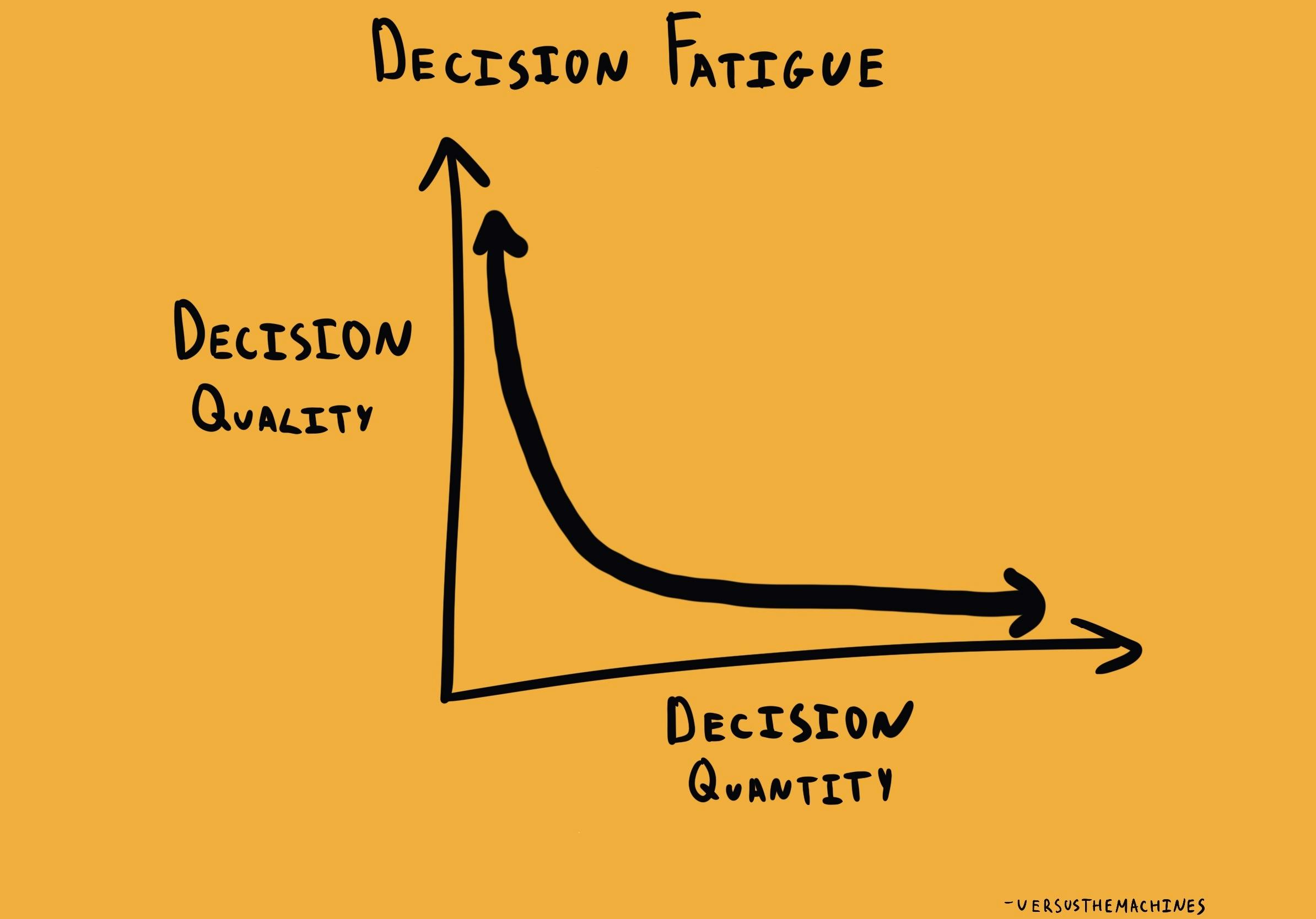¿Por qué tomamos peores decisiones al final del día?
¿Qué es la fatiga de decisión?
La fatiga de decisión describe cómo empeora nuestra toma de decisiones a medida que hacemos más elecciones y nuestras capacidades cognitivas se desgastan. La fatiga de decisión es la razón por la que nos sentimos abrumados cuando tenemos que tomar demasiadas decisiones.1

Dónde se produce este sesgo
La fatiga de decisión es un atajo cognitivo que provoca compensaciones irracionales en la toma de decisiones.2 Un ejemplo destacado es la indumentaria presidencial de Barack Obama. Afirma haber llevado todos los días trajes del mismo color para limitar el número de decisiones que tiene que tomar.3 Obama comprendió la fatiga de decisión y cómo puede comprometer la calidad de las elecciones importantes.
El fenómeno de la fatiga por decisión puede afectar incluso a las personas más racionales e inteligentes, ya que todo el mundo puede agotarse mentalmente. Cuantas más decisiones tomemos a lo largo del día, más difícil nos resultará cada una de ellas. Al final, el cerebro busca atajos para sortear la fatiga de decisión, lo que conduce a una toma de decisiones deficiente.